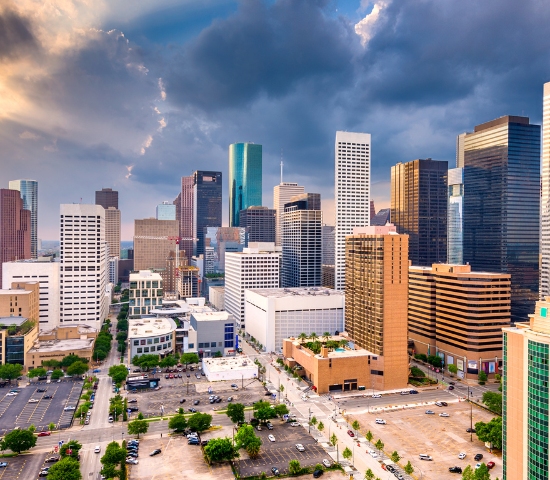
Preparations for Natural Disasters That Will Protect Your Home
Every day, we hear news about a different natural disaster striking communities worldwide. California suffers from wildfires, Florida suffers from hurricanes, and much more. Depending on where you’ve purchased your house or where you’re planning to move, it may be important to note what natural disasters pose a risk to your family and belongings.
Preparing ahead of time for emergencies can make a significant difference in how much it impacts your home. In this article, we’re going to discuss how you can make specific preparations for various climates and protect your home in the long run.
Preparing for Different Natural Disasters
Wildfires:
Wildfires can’t always be prevented, but you can take critical steps to prepare your home to resist ignition when they occur. One of the most vulnerable areas of any home is the roof— wind-driven embers from fires miles away can easily land in eaves and ignite flammable materials. Installing a Class A fire-rated roof offers the highest level of protection, as these roofs are designed to withstand extreme heat and wind conditions. Along with the roof, using fire-resistant materials for siding, decks, and vents can make a significant difference in how your home holds up in a wildfire.
Equally important is creating a defensible space around your property. Clear at least 30 feet around your home of dead vegetation, dry leaves, and overhanging branches, and reduce potential fuel sources within 100 feet. This is especially vital for homes located in wildland-urban interface zones, where development meets undeveloped land. Taking these measures doesn’t just reduce risk, it can be the difference between a home that survives a wildfire and one that doesn’t.
Tornados:
Protecting your home from tornado damage starts with reinforcing its most vulnerable points— especially the roof. Roof failure is one of the most common and costly consequences of tornadoes, but installing a durable metal roof can provide top-tier resistance against high winds, hail, and flying debris. It’s also crucial to strengthen other potential breach points such as windows, doors, and garages. Upgrading to wind-rated replacements or adding storm shutters can significantly improve your home’s resilience, especially if you’re retrofitting on a budget.
Exterior upkeep also plays a vital role in tornado preparedness. Regularly trim trees and remove dead limbs that could become airborne projectiles during a storm. Swap out gravel or rock landscaping for mulch, which is less likely to cause damage if lifted by strong winds. Secure sheds, patio furniture, and other outdoor structures with tornado anchors to prevent them from becoming hazards. These steps can go a long way in reducing damage and keeping your home and family safe when a tornado strikes.
Hurricanes:
Preparing your home for hurricanes means fortifying it against a combination of extreme hazards: high winds, flooding, flying debris, and even potential fires from downed power lines or gas leaks. Unlike other natural disasters, hurricanes can last for hours or even days, so your home must be built to endure sustained exposure to these conditions. One critical upgrade is installing hurricane-resistant windows made with laminated glass. These windows feature a strong polymer layer between glass panes, helping them resist both high wind pressures and airborne debris.
Additionally, reinforce your home’s entry points to prevent structural failure. Strengthen exterior doors with at least three hinges and a deadbolt that extends at least one inch into the frame. Upgrading to a wind-rated, impact-resistant garage door is also essential, as garages are highly susceptible to wind damage and flooding. A secure garage can also safeguard your vehicle, which is at risk of being swept away in as little as a foot of water. These proactive measures can dramatically improve your home’s resilience when a hurricane hits.
Floods:
Flooding is the most frequent and financially devastating natural disaster, with even a single inch of water capable of causing tens of thousands of dollars in damage. To protect your home, start by identifying your base flood elevation—the projected high point of floodwaters in your area. Use this as a reference to elevate critical components like electrical systems, HVAC units, and plumbing at least a foot above that level to help avoid major losses.
In addition, shape your landscaping to slope away from your home to redirect water, and keep gutters and drains clear to allow proper runoff. Installing flood-resistant materials on exterior walls can help guard against minor flooding, and equipping your basement or lower levels with a sump pump (ideally with a battery backup) will allow for quick water removal during an emergency. These steps can make a significant difference in how your home weathers a flood event.
Conclusion: Get A Head Start On Disasters
No matter where you live, understanding the natural disasters most likely to affect your area is essential for protecting your home and loved ones. By taking proactive steps, like reinforcing vulnerable structures, upgrading materials, and maintaining your property, you can reduce the damage these events cause and increase your home’s resilience. A little preparation today can make all the difference when disaster strikes.
Protecting your home is important, but so is finding the right home to move into. If you’re looking for your dream home in the Houston, Texas area, Oscar Combs Realtor is the right candidate for you. Contact us today to learn more about how we can assist you in searching for and securing the house of your dreams.





